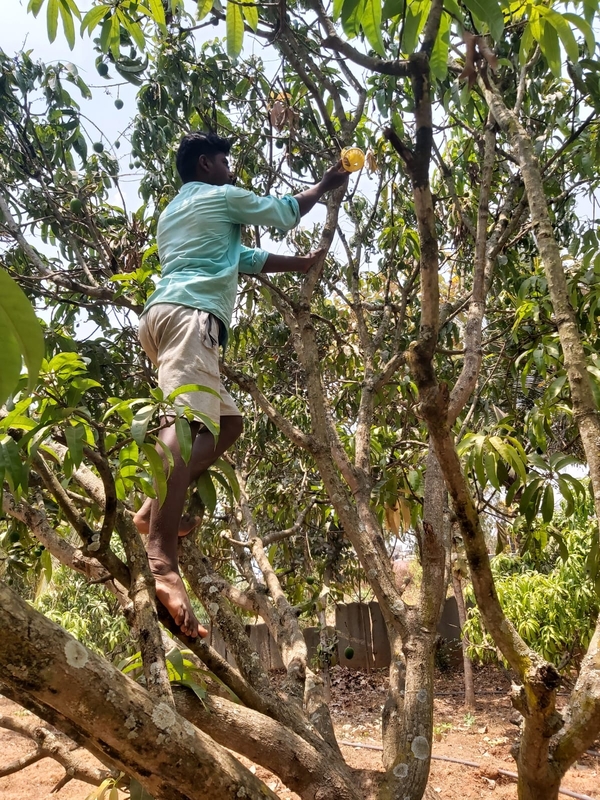The willows of Wular Lake in Kashmir, India

A vast glittering expanse of water -- the Wular lake, the biggest fresh water lake in India lies in the Kashmir valley fairly close to Srinagar. Covering an immense area of 130 km, it is the largest fresh water lake in India. In 1911, the lake was 213 km and over the decades, has shrunk to almost half it's original size, like most lakes across the sub-continent.
This shrinkage has been attributed to drying out of the wetlands around and increasing areas under cultivation, and the plantation of willows since 1912 which were meant to support the fuel needs of the local people. In a research paper called 'The Economic feasability of Willow Removal from Wular Lake' by Dr Rahul Kaul, Dr A Massodi, Ajaz Rasool, MN Murthy and J. Kishwan of the Wildlife Trust of India, supported by the Ministry of Environment, Forest and Climate Change, Government of India and the Indo-German Biodiversity Programme, GIZ,India, they have analysed the effects of the removal of the willows, on the lake to increase the capacity of the lake, to cut back on the flood risk.
But what are the other repercussions that have to be viewed. The paper looks at the impacts of the removal of these willows, on various environmental spin-offs that the trees give to the area. And researches if it is finally worth cutting down the trees or saving them.
The Wular according to the paper, is a shallow lake, 5.8m: Max. depth, situated about 40 km northwest of the capital city of Srinagar.The Valley of Kashmir, within which the lake is located, is surrounded by high mountain ranges and the watersheds drain into the valley, which slopes south to north at a mean altitude of about 1700 m (in Srinagar).
The Jhelum river, which is the main river flowing through and across the valley flows into the Wular from the southeastern side and flows out of the lake to join the Indus.
On the positive side, the activities would help to increase the volumetric water capacity thus helping in better water regulation since more water would be available, better flood control since waters flowing through various rivers and channels bring higher flows during such times and the lake needs to have higher absorption capacity. The increased water availability would also potentially lead to higher availability of water during lean seasons for the three downstream power stations and higher power generation. The suggested plan seemed to share both pros and cons.
The researchers undertook an interesting cost benefit analysis of the revised plan, to assess if it made economic sense to remove the willows from the lake. They assessed costs and benefit flows through four categories of stakeholders – government, public, individuals and business and industry.
The results indicate overwhelming economic benefits of willow removal and dredging to improve volumetric capacity in terms of costs saved on flood damage, increase in power generation, improvement in livelihoods by more fish and water chestnut becoming available and the onetime gain from the sale of willow. The main cons come from loss of sequestration benefits and also the costs of silt removal.
At the same time, the state ordered willows to be planted within the lake area to provide firewood supply to people. Major plantations were undertaken in year 1916, establishing the famous Ningli plantations. The locals use the tree as firewood and it is also used for packaging and to make the famed Kashmir willow cricket bats. Scientists say willow wood can withstand moisture and so can grow easily in saturated soils. Willows have a fibrous root system that has the capacity of binding soils an they show a high levels of evapo-transpiration and have the ability to accumulate high levels of toxic metals.
Clearing the willows will help in increased water availability for power generation downstream, but more importantly, capacity to absorb water during excess rains saving significant costs on flood related costs. Removal of trees will also give the forest department a onetime income of over 50 crore in four years. We feel that this amount should be ploughed back into the lake conservation for a direct cost of removal is loss of CO2 sequestration which will become quite significant over time.
This shrinkage has been attributed to drying out of the wetlands around and increasing areas under cultivation, and the plantation of willows since 1912 which were meant to support the fuel needs of the local people. In a research paper called 'The Economic feasability of Willow Removal from Wular Lake' by Dr Rahul Kaul, Dr A Massodi, Ajaz Rasool, MN Murthy and J. Kishwan of the Wildlife Trust of India, supported by the Ministry of Environment, Forest and Climate Change, Government of India and the Indo-German Biodiversity Programme, GIZ,India, they have analysed the effects of the removal of the willows, on the lake to increase the capacity of the lake, to cut back on the flood risk.
But what are the other repercussions that have to be viewed. The paper looks at the impacts of the removal of these willows, on various environmental spin-offs that the trees give to the area. And researches if it is finally worth cutting down the trees or saving them.
The Wular according to the paper, is a shallow lake, 5.8m: Max. depth, situated about 40 km northwest of the capital city of Srinagar.The Valley of Kashmir, within which the lake is located, is surrounded by high mountain ranges and the watersheds drain into the valley, which slopes south to north at a mean altitude of about 1700 m (in Srinagar).
The Jhelum river, which is the main river flowing through and across the valley flows into the Wular from the southeastern side and flows out of the lake to join the Indus.
On the positive side, the activities would help to increase the volumetric water capacity thus helping in better water regulation since more water would be available, better flood control since waters flowing through various rivers and channels bring higher flows during such times and the lake needs to have higher absorption capacity. The increased water availability would also potentially lead to higher availability of water during lean seasons for the three downstream power stations and higher power generation. The suggested plan seemed to share both pros and cons.
The researchers undertook an interesting cost benefit analysis of the revised plan, to assess if it made economic sense to remove the willows from the lake. They assessed costs and benefit flows through four categories of stakeholders – government, public, individuals and business and industry.
The results indicate overwhelming economic benefits of willow removal and dredging to improve volumetric capacity in terms of costs saved on flood damage, increase in power generation, improvement in livelihoods by more fish and water chestnut becoming available and the onetime gain from the sale of willow. The main cons come from loss of sequestration benefits and also the costs of silt removal.
At the same time, the state ordered willows to be planted within the lake area to provide firewood supply to people. Major plantations were undertaken in year 1916, establishing the famous Ningli plantations. The locals use the tree as firewood and it is also used for packaging and to make the famed Kashmir willow cricket bats. Scientists say willow wood can withstand moisture and so can grow easily in saturated soils. Willows have a fibrous root system that has the capacity of binding soils an they show a high levels of evapo-transpiration and have the ability to accumulate high levels of toxic metals.
Clearing the willows will help in increased water availability for power generation downstream, but more importantly, capacity to absorb water during excess rains saving significant costs on flood related costs. Removal of trees will also give the forest department a onetime income of over 50 crore in four years. We feel that this amount should be ploughed back into the lake conservation for a direct cost of removal is loss of CO2 sequestration which will become quite significant over time.

Related Articles
Editor's Picks Articles
Top Ten Articles
Previous Features
Site Map
Content copyright © 2023 by Marianne de Nazareth. All rights reserved.
This content was written by Marianne de Nazareth. If you wish to use this content in any manner, you need written permission. Contact Marianne de Nazareth for details.





 -resizeimage.jpg.jpg)

